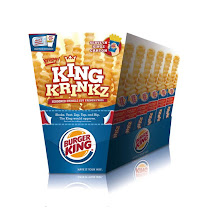According to them, chocolate, lipstick, fishing equipment, running shoes, wine (but cheaper vintages), gold coins, seeds, tanning lotion, Dinty Moore canned stew & Spam (the edible variety, both from Hormel Foods Corp.) are all up. Cars and major appliances are (surprise!) way down. Hershey’s profits were up 20%, and Kraft saw double-digit sales increases in the ultimate “comfort food,” mac & cheese. No one is quite sure if romance is up or folks are putting off kids, but the spike in condom sales reported here in an earlier edition reached 5%. Perhaps romance is the reason, since Match.com had its best year in the past seven. Not all staples that increased were the positive kind: laxative liquids and powders jumped 11.5% and stomach over-the-counter remedies such as Pepto-Bismol surged 8%, probably as investors watched their portfolios crumble. Wal-Mart Stores Inc. continues to be a winner, but for the first time ever Dollar Tree Inc. made the Fortune 500 (# 499). Luxury retailers like Saks Inc. saw their sales tumble (32%); Goodwill Industries International had a rise of 7%.
In the foodservice channel, fast casual is king this month. As many as 700 new chains will debut in 2009, and sales of the Top 100 fast-casual restaurant chains grew 10.8% last year ($16.7bn total). The National Restaurant Association has predicted sales will fall by 2.5% across the restaurant category during the same period. Career women are the reason the chains are doing well by providing quality in an upscale setting, with top performers Chipotle Mexican Grill, Panera Bread and Cosi, Inc. Twenty-five per cent are working women, while only 15% are homemakers. Career men make up just 18%.
In the grocery biz, sales increased 5.2% in 2008 with identical-store sales up 4.5% according to the most recent report released by the Food Marketing Institute (FMI). After adjusting for inflation, sales actually declined 0.5% (identical-store sales falling 1.2%). Industry net profits dropped to a slim 1.43% percent (down from 1.82%) due to intense competition, as well as increases in the cost of goods, health insurance and credit card interchange fees. Highest profits were from independent retailers (1-10 stores) with net profits and identical-store sales going up by 1.90% and 5.11% respectively. In order to meet consumer demands for lower costs and added value, stores are lowering prices and offering more private label products (up to 9.7% of all good carried from 7.5% in 2007).
In the foodservice channel, fast casual is king this month. As many as 700 new chains will debut in 2009, and sales of the Top 100 fast-casual restaurant chains grew 10.8% last year ($16.7bn total). The National Restaurant Association has predicted sales will fall by 2.5% across the restaurant category during the same period. Career women are the reason the chains are doing well by providing quality in an upscale setting, with top performers Chipotle Mexican Grill, Panera Bread and Cosi, Inc. Twenty-five per cent are working women, while only 15% are homemakers. Career men make up just 18%.
In the grocery biz, sales increased 5.2% in 2008 with identical-store sales up 4.5% according to the most recent report released by the Food Marketing Institute (FMI). After adjusting for inflation, sales actually declined 0.5% (identical-store sales falling 1.2%). Industry net profits dropped to a slim 1.43% percent (down from 1.82%) due to intense competition, as well as increases in the cost of goods, health insurance and credit card interchange fees. Highest profits were from independent retailers (1-10 stores) with net profits and identical-store sales going up by 1.90% and 5.11% respectively. In order to meet consumer demands for lower costs and added value, stores are lowering prices and offering more private label products (up to 9.7% of all good carried from 7.5% in 2007).
Last year 69.9% of stores focused on a lower price strategy, rising to 78.4%. More than (93% of retailers now plan to increase private label products, which account for 15% of their sales (up from 11.5% two years ago). Full-service supermarkets were identified by 56 percent of shoppers as their primary store, down from 60 percent last year. Customers are loyal to their primary store, with just 6 percent saying they changed stores to save money on groceries, but when it comes to making a secondary trip, 42 percent of shoppers occasionally shop at other stores, such as supercenters and warehouse stores, to take advantage of specials. Supercenters have 27 percent of the market share when it comes to grocery shopping, and are steadily raising their share from 22 percent in 2005.
FMI has outlined the way consumers shop with most using a full-service supermarket (75%), followed by a distant second with supercenters (39%). The average number of trips per week was 2, though slightly more for the most price-sensitive shoppers. More than ¾ said they “almost always” check the price of a product before buying it the first time. Spending on groceries averaged out at $98.40 per week, up marginally from 2008’s $97.80. Over half claim to be preparing more meals at home than previously, with 92% believing they eat healthier at home, despite admitting their choices at home could be healthier than they are (57%). Apparently they believe less-healthy foods are better for them if prepared at home. Time-saving, affordable and healthy choices were stressed as highly desirable with “easy-to-make” listed by 48%, “meals for $10 or less” 44%, and “convenient placement in the store” 28%.
FMI has outlined the way consumers shop with most using a full-service supermarket (75%), followed by a distant second with supercenters (39%). The average number of trips per week was 2, though slightly more for the most price-sensitive shoppers. More than ¾ said they “almost always” check the price of a product before buying it the first time. Spending on groceries averaged out at $98.40 per week, up marginally from 2008’s $97.80. Over half claim to be preparing more meals at home than previously, with 92% believing they eat healthier at home, despite admitting their choices at home could be healthier than they are (57%). Apparently they believe less-healthy foods are better for them if prepared at home. Time-saving, affordable and healthy choices were stressed as highly desirable with “easy-to-make” listed by 48%, “meals for $10 or less” 44%, and “convenient placement in the store” 28%.
Retailers who provide information online and in stores to help make healthy choices at the supermarket got high marks (71%), along with in-store pharmacists who provide health-and-wellness advice (70%). In-store health clinics have been a topic of much discussion in the grocery business, but only 8% listed them as important. Most shoppers indicate they are relatively confident with food safety, though 31% indicated they had stopped buying a specific food because of a safety concern or recall. Not surprisingly shoppers are more confident purchasing food grown in the U.S. (90%) while less than half are comfortable with imported foods. They gave higher marks to supermarkets to insure food safety than the government.
Local products continue to be important with 72% claiming to buy them on a regular basis. Reasons for this popularity include freshness, supporting the local economy, taste, and “concern about the environmental impact of transporting foods across great distances.” Recycling and sustainability initiatives were important to over half of those surveyed, with up to 40% of shoppers now bringing their own bags. Data for the survey was collected by Harris Poll Online among a nationally representative sample of 2,040 U.S. shoppers.
FMI also reports new product launch rates continued to rise in 2008 with 35,999 (up 9.3% but slower than 2006’s 11% upturn). The total new food & beverages category reached 18,244, a slight increase (2.3%) and far below the 11% jump in 2006 (17,828 total new products).
And finally, the 100 calorie package is another victim of the recession. Consumers are turned off by the expense and what many see as extraneous packaging that is a threat to sustainability. The solution? Measuring out their own 100-calorie servings. Not to be left without a “hot button issue,” the marketing crowd and consumers are both abuzz over “safety.”
FMI also reports new product launch rates continued to rise in 2008 with 35,999 (up 9.3% but slower than 2006’s 11% upturn). The total new food & beverages category reached 18,244, a slight increase (2.3%) and far below the 11% jump in 2006 (17,828 total new products).
And finally, the 100 calorie package is another victim of the recession. Consumers are turned off by the expense and what many see as extraneous packaging that is a threat to sustainability. The solution? Measuring out their own 100-calorie servings. Not to be left without a “hot button issue,” the marketing crowd and consumers are both abuzz over “safety.”
Does anyone recall trans fats?
This blog includes excerpts from a weekly round-up of food industry & food licensing news provided free to Broad Street Licensing Group's clients, and as a paid subscription service (6 months $695; 1 year $1,125). Too busy to keep up with the news wires & publications about the food business? If you or your company would like to subscribe to our news service, call Danielle Foley at Broad Street Licensing Group (tel. 973-655-0598) and ask for your free sample or click on our website.
This blog includes excerpts from a weekly round-up of food industry & food licensing news provided free to Broad Street Licensing Group's clients, and as a paid subscription service (6 months $695; 1 year $1,125). Too busy to keep up with the news wires & publications about the food business? If you or your company would like to subscribe to our news service, call Danielle Foley at Broad Street Licensing Group (tel. 973-655-0598) and ask for your free sample or click on our website.
.gif)












No comments:
Post a Comment
Note: Only a member of this blog may post a comment.